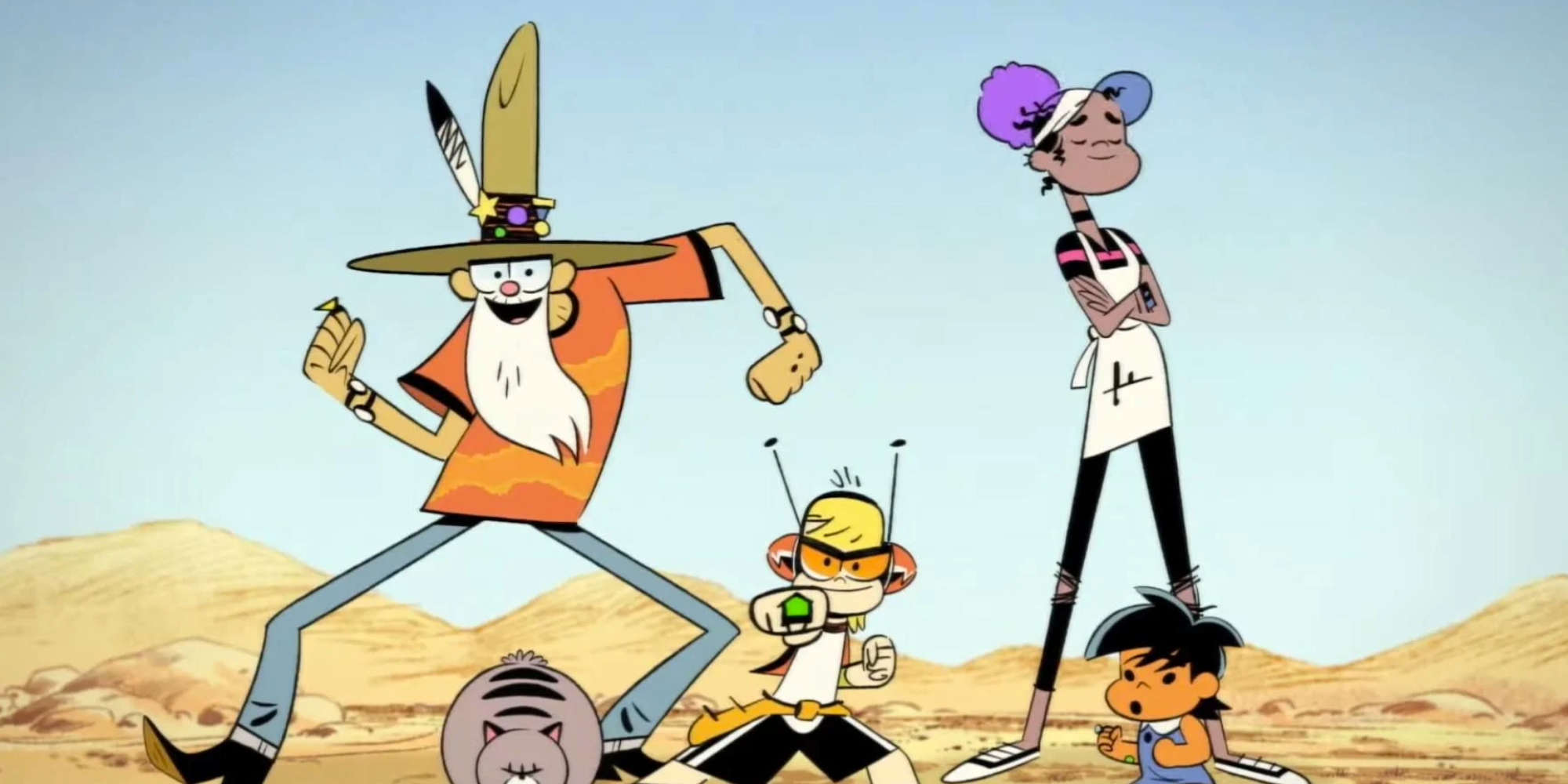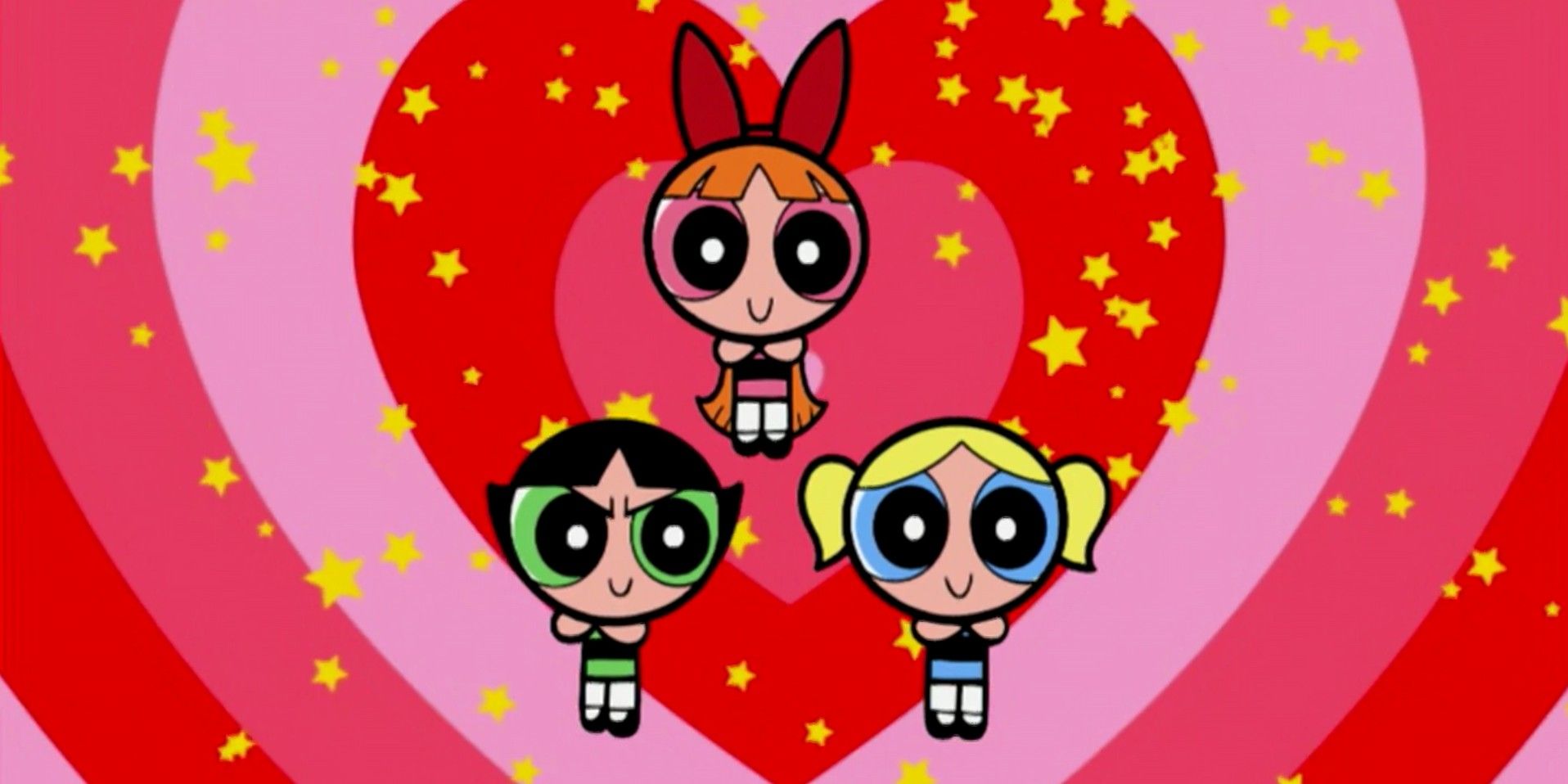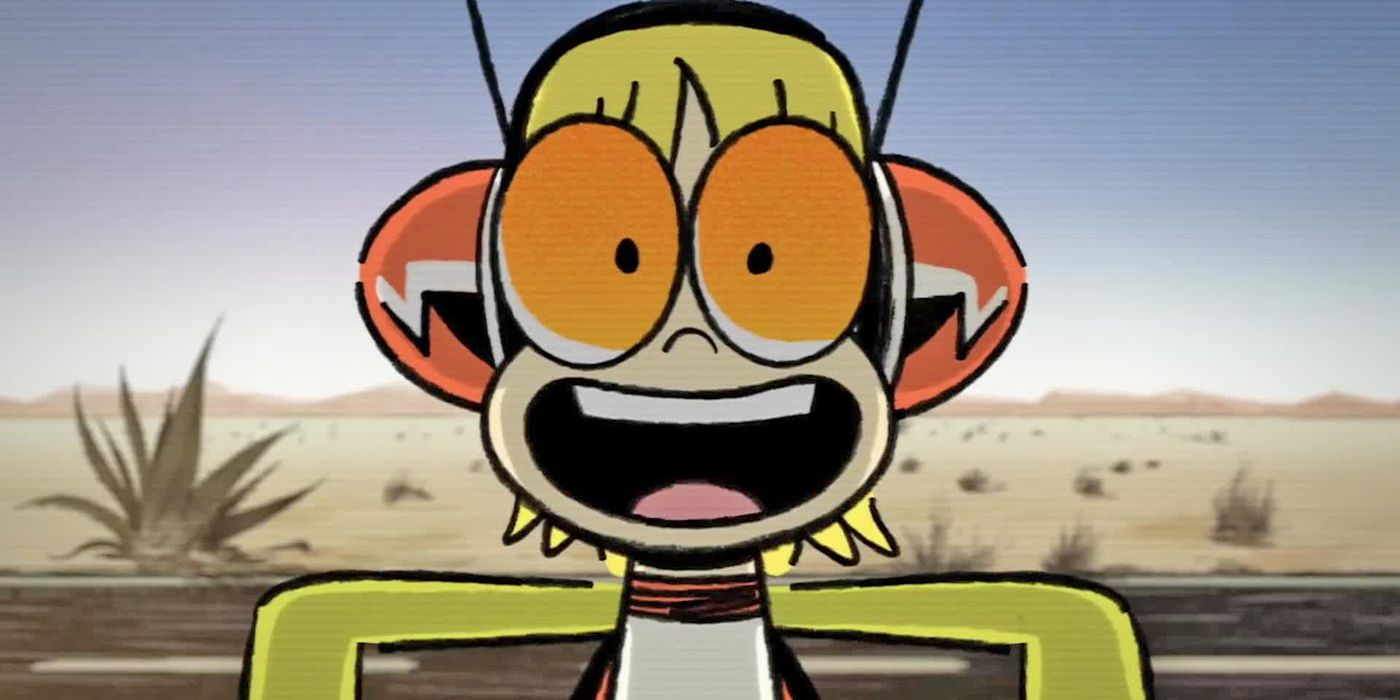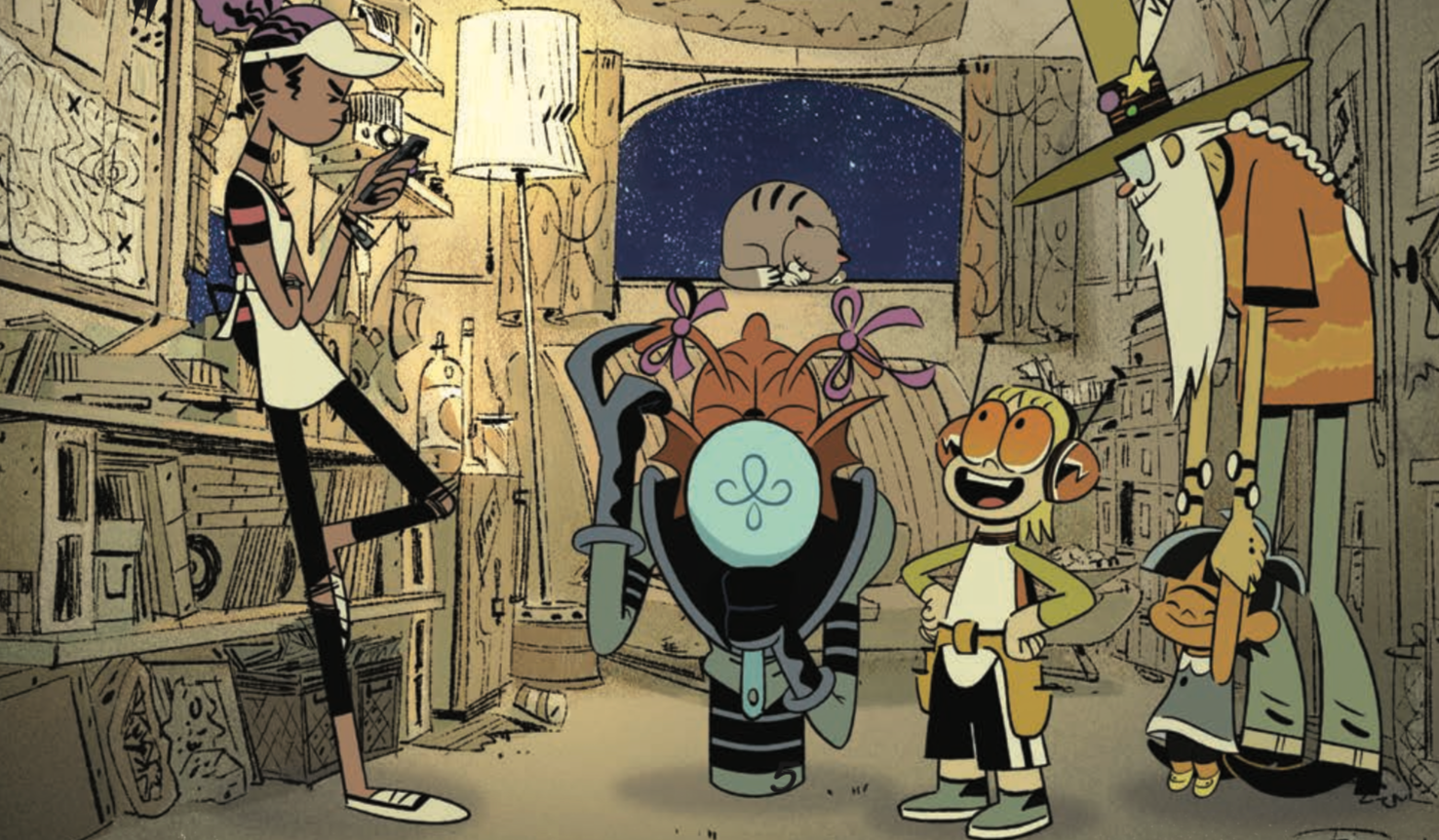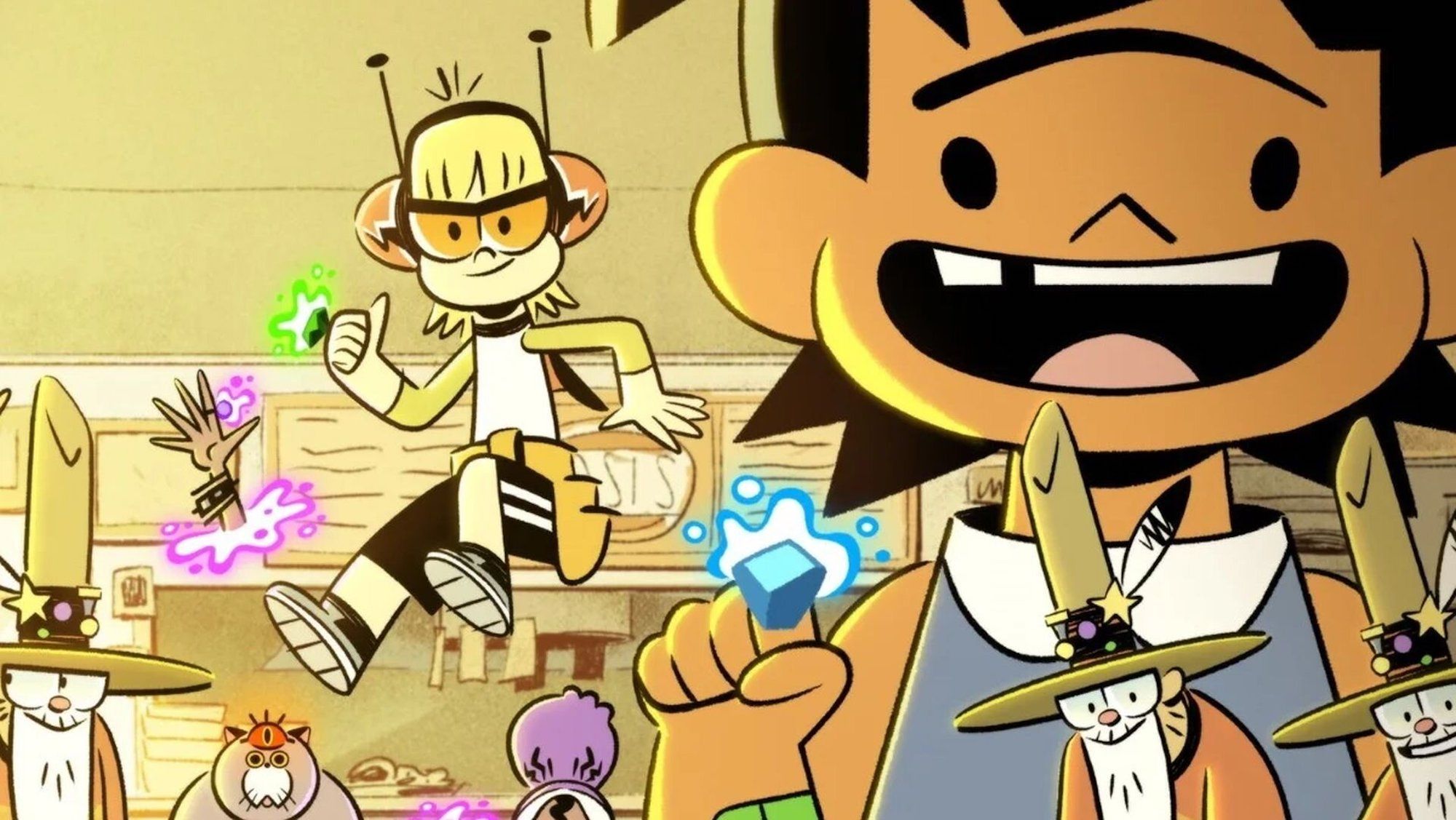The world of animation has changed since Craig McCracken burst onto the scene with his 1992 CalArts student project Whoopass Stew, which eventually went on to become The Powerpuff Girls. Between PPG and Foster's Home For Imaginary Friends for Cartoon Network and Wander Over Yonder for Disney Channel, McCracken has been one of the most successful creators of episodic comedy cartoons. In the streaming age, however, animated series are becoming increasingly serialized, and Kid Cosmic, McCracken's first series for Netflix, takes advantage of this format to tell a fun but relatively grounded and serious story about a kid who desperately wants to be a hero.
McCracken spoke to CBR about developing Kid Cosmic, the changing animation landscape and one plot point which is absolutely not meant as a commentary on current events.
Kid Cosmic is your first superhero show since The Powerpuff Girls, but it's a very different take on the genre. What inspired you to return to superhero stories?
Craig McCracken: I just felt like-- It wasn't a conscious choice to return to superhero stories. I just had this idea about this character, this young kid who dreams of being a hero and comes about these powers that make his dream come true. I just wanted to explore that idea, I wasn't thinking I wanted to do another superhero thing. I just really liked the characters and set-up and wanted to explore this young kid as he learns what it really means to be a hero.
This is also your first fully-serialized show. What was it like adjusting to that?
CMC: That was great. I mean, for a long time I've always wanted to tell a long-form story. Just doing 11 or 22[-minute episodes] kind of gets-- It's fun to do for humor purposes, but it sort of gets frustrating as far as storytelling because you always have to hit the reset button and your characters can never learn and grow. Being able to tell a serialized story where each episode rolls into the next one and your characters can grow and change through the season is something I've wanted to do for a really long time. We sort of saw this more like a movie broken into 10 chapters than necessarily a series.
What were your main inspirations for developing this story?
CMC: The main inspiration for it was really just the characters. I just wanted to pay homage to classic comic books, classic science fiction, but really kind of tell from a real human perspective. Some of the other inspirations are just movies I love like Buckaroo Bonzai and comics like Hergé's Tintin, but we really want to ground this show in reality. Even though there's a fantasy element about superpowers and alien invasions, we really kind of tried to focus on the human element and the character story first-and-foremost.
You talked about how Kid was the basis for the show. How did you come up with the other heroes?
CMC: It was really just trying to come up with a hero team of unlikely characters. So what random characters would I put on a superhero team that you would never pick to put on a superhero team? The team is just comprised of random locals, so the idea that it's about a kid, a teenager, a toddler, an old man and a cat, it's not a hero team anyone would consciously put together. It was just a matter of what kind of comedy and character development and humor can I get out of this oddball assortment of characters.
A lot of your past shows are really fast-paced. This one definitely is slower. Was this for grounding or was it just part of what you can do with the serialized format?
CMC: Yeah, that was really the reason. If you're doing an 11-minute cartoon, you just have to move through the story as fast as you can, so you develop a real quick way of getting the plot out... But with Kid Cosmic, we had time to let things unfold. We had time to introduce the characters slowly and didn't have to rush through things as much, and that was a really great opportunity to do that, to not have to constantly put things out... It was nice to just let it breathe and let the characters experience the situation they're in and just kind of slowly unfold things at a different pace. It was fun to be able to do that finally.
The art style is very recognizably your style, but it also looks different from your other shows. Tell me a bit about how you developed the world visually.
CMC: Because the basic concept of Kid Cosmic is in our world, these are regular people who come into an extreme circumstance, I really wanted to make it feel real and believable. I started looking at other types of cartooning that felt more grounded in real life without being too broad and exaggerated. I started looking at classic comic strip characters like Hank Ketcham's Dennis the Menace and Hergé's Tintin where, even though they're cartoony characters, they still feel grounded as real people and feel believable and live in the real tactile world. They're not extreme wacky cartoon characters, and because the basic premise of the show is regular people with these exceptional powers, we needed a look that felt grounded in reality.
In every aspect, we didn't push the cartooniness. No extreme takes, the animation isn't really squashy-and-stretchy, there's not a lot of cartoony sound effects throughout the show, because it's more of an animated series than, you know, a cartoon, per se.
You went all out on the cartooniness in Wander Over Yonder and this is going in the opposite direction.
CMC: A lot of times the concept of the show will dictate that. The concept of Wander was so broad and cartoony, we wanted to design it and make it a cartoonier show. But the concept of Kid Cosmic is so grounded in reality... The concept sort of dictates the design of the show, and that applies to everything I've ever done.
How did you decide that cutting off legs was gonna be your go-to kid-friendly violence for Kid Cosmic?
CMC: For Stuck Chuck, we just needed a reason why the alien was stuck with them and couldn't run away and couldn't fight, so we decided his legs were teleported away, and that way he's forced to stay there with the Kid. It was just an idea we had for how we'd not make him a threat anymore but still have him be part of the gang and join in on their adventures.
Was the Earth Force Enforcement Force created before or after the Space Force became a thing?
CMC: It was actually created before. It was an idea I had a few years ago. There was a version of it in some Wander episodes we were thinking of doing for a potential Season 3... "Star Force Enforcement Force," but we didn't end up making that series, so I just modified it to the Earth Force Enforcement Force. But yeah, it's not a comment on the Space Force at all!
One general trend that's been going on in animation, going along with increasing serialization, is a rise in redemption arcs in shows like Steven Universe and She-Ra. Without going into spoilers, Kid Cosmic has a similar sensibility. Thoughts on this trend?
CMC: We wanted to really tell a story about what it meant to be a hero. I didn't want to say "being a hero is about having powers and beating up people who you disagree with or you determined are bad guys," I didn't want it to be that shallow and violent and wanted to focus more on a story of what it really meant to be a hero. We came up with the theme of "Heroes help, not hurt."
Most little kids, when they want to be a hero, they want to fly around and have powers and stop the bad guys. We really want a kid to learn that's not what being a hero means -- it means helping people. I thought it was important for him to have that growth, and again, that's something you couldn't do in a random 11- or 22-minute episode, he'd never learn that lesson, he could never grow and change, but with the serialization, we can allow him to experience that, which is great. It was a really great opportunity to tell that kind of a story.
The character wouldn't work if it wasn't about him growing and changing.
CMC: Yeah, definitely.
How did the pandemic affect the production?
CMC: We all started working from home around March, and it all sort of slowed down the daily production of things... We go to outside studios or vendors to mix our shows for post-production, and for a while, we couldn't do that... So we had to work out how are we gonna mix this show remotely? How is our animation studio in Canada going to share files and animate scenes from their homes? So it just kind of slowed down the production for a little bit of time while we figured out this new way of working, but once the system kind of got in place, we were able to continue to produce the show... The one thing I'm really proud of is the quality of the show didn't slip a bit. The show maintained the level of quality we set in the beginning and everyone was really great about getting the work done and working together under these circumstances.
Season 1 of Kid Cosmic premieres on Netflix February 2.

